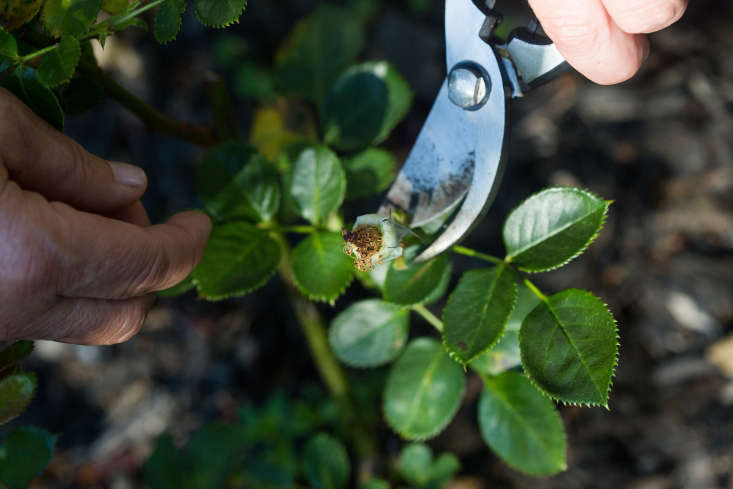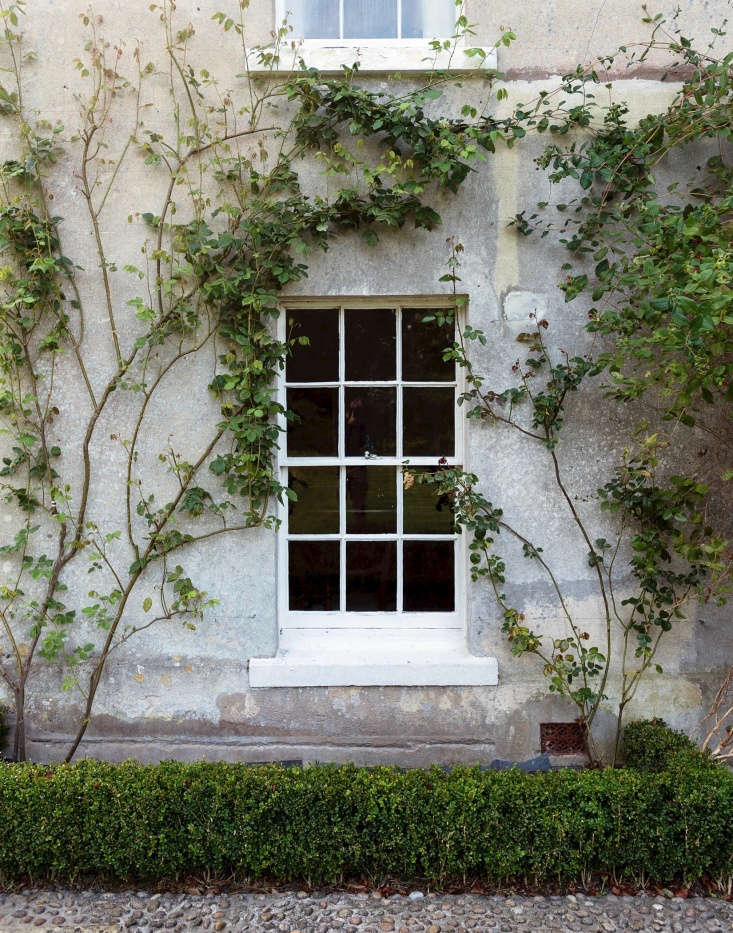You could spend a lifetime loving roses, and be happier for it. Even then, you would have a lot more to learn about these mysterious, velvet-petaled garden celebrities.
Tea roses, climbers, shrub roses, heirloom roses, floribundas, polyanthas, grandiflora hybrids–how are they different and what does every rose have in common? Look into its heart and you’ll learn more about your own. This week, in honor of Valentine’s Day, here are 10 things nobody tells you about roses.
(N.B.: Featured image from Everything You Need to Know About Rambler Roses. Photograph by Britt Willoughby Dyer.)
1. Roses are among the world’s oldest known flowers.

We know quite a bit about where roses come from. Roses may not be the world’s oldest flower (as evidenced by fossils that date back 100 million years). But roses have been in existence for more than 35 million years, at least in central Colorado, where Swiss botanist Léo Lesquereux found fossils in the late 19th century.
Of the more than 100 known species or roses (there are thousands of cultivars), most are from Asia. Other continents–including North America, Africa, and Europe–also have native rose species. Over the centuries, it has been easy to interbreed species, which makes it tricky to trace many varieties’ parentage.
The garden roses we know today are woody perennial plants with an inclination to grow as shrubs if left to choose. The efforts of cross breeding have created many varieties: climbers that can be trained to grow against a wall; scented tea roses (as well hybrid tea roses bred for color and size)’ floribundas with clusters of flowers, smaller polyantha shrubs, and grandiose grandifloras, to name a few. Read more in Roses 101: A Field Guide to Planting, Care & Design.
2. If you’re wondering how roses became red…

Red flowers, including roses, have pigments called anthocyanins (which attract pollinators in the garden, as well as romantics in florist shops).
3. Some roses will bloom again if you deadhead spent flowers.

As a cluster of floribunda flowers fade, remove them from the bush to encourage new blooms. Clip the spent the at its base, making make the cut at a juncture where the stem meets a grouping of five leaves. See more tips in Gardening 101: How to Prune Roses.
3. Garden roses look best in groups of three or more.

Plant one variety of shrub roses together in groups of three, five, or seven (even numbers tend to look too match-y, or like soldiers marching in a solemn row, a look to be avoided in the garden), for a massed look. A single plant can look spindly and lonely. See more garden design ideas in 10 Landscape Design Tips You Need to Know to Get Started.
5. Some roses will grow happily in partial shade.

If you have fewer than six hours a day of sun in your garden, you can still grow roses. Choose shrub roses and floribundas. Two of our favorite roses to plant in partial shade, where they’ll still produce flowers all summer long, are ‘Iceberg’ (with snowy and showy flowers, it’s a hardy climber or shrub rose in USDA zones 5 to 10) and ‘Ballerina’ (hardy in USDA zones 5 to 10, it can be trained as a diminutive climber which will reach a height of up to 6 feet at maturity).
6. You don’t have to spray the aphids on your roses.

“If you get aphids, don’t spray – aphids feed the birds and beneficial insects. Squash them with your fingers if they bother you,” writes Val Bourne in the Telegraph.
7. The roses that smell best aren’t in long-stemmed Valentine’s Day bouquets.

Do you want to know which roses are the most fragrant?: Memorize this combination of letters and numbers: RhNUDX1. No, it is not a license plate. Rather, it is a gene found in the petals of intensely perfumed ‘Papa Meilland’ hybrid tea rose. In a recent study, scientists “knocked out RhNUDX1 in a line of roses, and found that their new flowers hardly emitted” the aromatic molecules that create scent, writes Aviva Rutkin in New Scientist.
For now, plant nurseries aren’t listing RhNUDX1 content levels on plant tags. But you can look for heirloom varieties with strong perfumes. “Old Roses are a broad group that includes many old varieties of Gallica, Damask, Alba, and Centifolia (including the intriguing Moss roses) that predate the mid-19th century. These roses are valued for their exquisitely beautiful blooms and fragrance,” writes our contributor Clare Coulson. ” ‘Charles de Mills’ (1790) and ‘Souvenir de la Malmaison’ (1843) are typical of these old roses. Rosa mundi, which predates them all by many centuries, is a once-flowering Gallica rose with masses of striped pink flowers.” Read more in Everything You Need to Know About Roses.
8. Roses are edible.

If you are wondering what roses you can eat, the answer is all of them. Petals and rose hips only, though. Please don’t start chewing on the thorns. “Rose hips are as good as they look, fortified with more vitamin C than citrus,” writes our UK-based contributor Kendra Wilson. “Rose hips make a powerful, immunity-bolstering syrup or vinegar, once the irritating, minute hairs have been strained from the edible part of the fruit (animals do not have this problem).”
For a recipe for tea made from dried hibiscus and rose petals, see Plant Based Diet: Summer Goddess Sun Tea.
9. Roses are not poisonous to pets.

Roses are not toxic to dogs or cats if pets eat the flowers. However, roses do have sharp thorns (which, from an evolutionary standpoint, evolved for the purpose of protecting the plant from animals which might otherwise maul, crush, chew, or trample it). You may wonder, “Are roses harmful to cats?” The answer is thorns can be harmful to cats, dogs, deer, humans, and anyone else who is not careful.
10. Long-stemmed Valentine’s Day hybrid tea roses are descendants of a French rose.

“‘La France’, the very first hybrid tea, was launched in 1867, giving it a special place in rose history,” writes Catherine Horwood in Rose.
Along with floribundas, long-stemmed hybrid teas “flower throughout the summer and resist most diseases better than old roses,” Horwood notes.
Read more growing tips in Roses: A Field Guide to Planting, Care, and Design in our curated guides to Perennials 101. Read more:
- Landscape on a Budget: The $250 Instant Rose Garden
- Expert Advice: 8 Best Garden Roses for Cutting, from a Boutique Grower
- Object of Desire: Blue Roses
- Rosa Rugosa: A Field Guide to Planting, Care & Design
- English Gardens: David Austin Roses in Shropshire











Have a Question or Comment About This Post?
Join the conversation